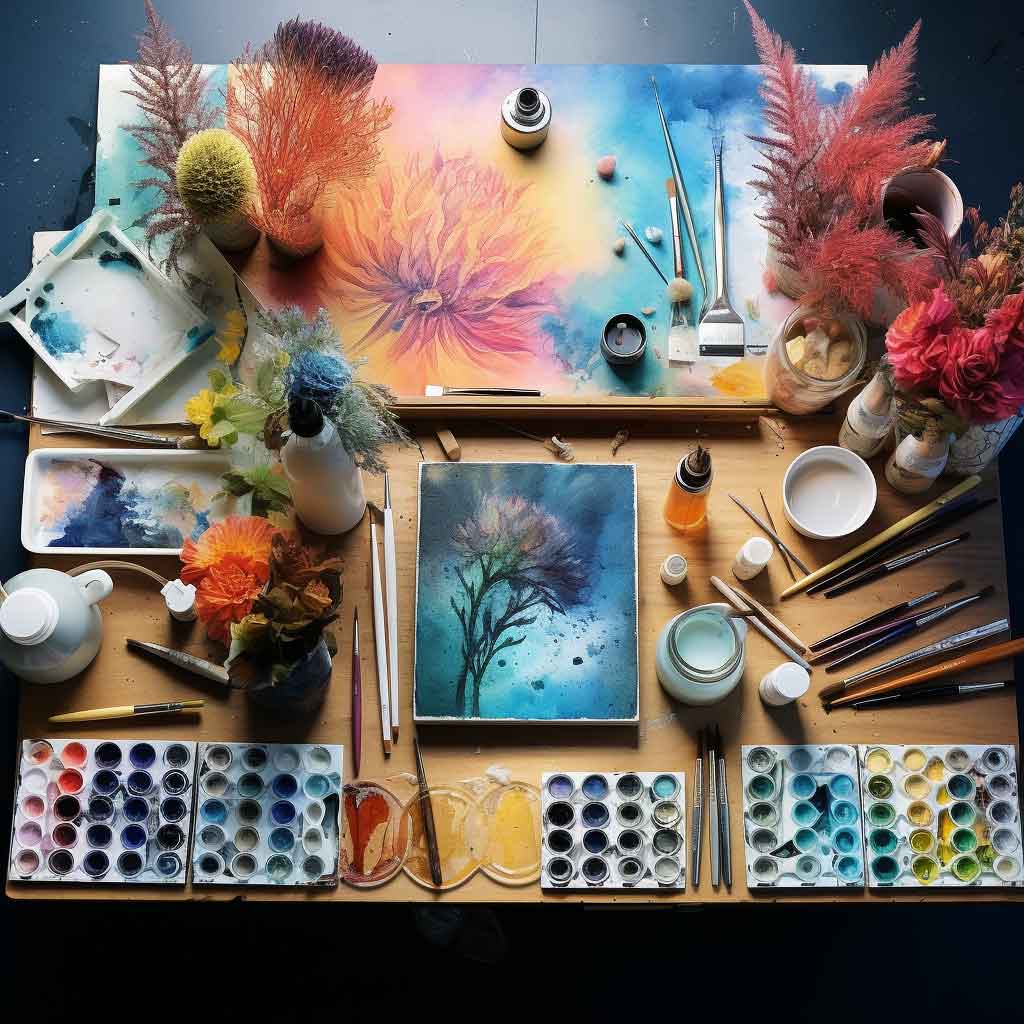Essential Watercolor Supplies Every Beginner Needs

Essential Watercolor Supplies Every Beginner Needs
Starting out with watercolor painting is an exciting adventure that opens up a world of artistic options. As a beginner, picking out the right watercolor supplies is very important for building a strong base for your artistic development. This complete guide will talk about the basic watercolor tools that every beginner should have. This way, you’ll be ready to let your creativity flow onto the canvas with ease.
1. Good watercolor paper is the blank slate for your dreams.
When you’re making art, watercolor paper is the foundation. Watercolor paper is different from regular paper because it is made to handle paints when they are wet. Look for watercolor paper that says so on the package and has a weight that is given in pounds (lbs) or grams per square meter (gsm). A 140lb (300gsm) paper is a good choice because it is stable and not too thick.
2. Brushes
If you want to use different styles and effects, you need to buy a good set of watercolor brushes. Get a pack with round brushes for details, flat brushes for washes, and a rigger brush for fine lines to start. Natural hair brushes, like sable or squirrel, hold more water and make the application smoother, but plastic brushes are cheaper and don’t hurt animals.
3. Watercolor Paints
Choosing the right watercolor paints is both a fun and important task. Both tubes and pans are good ways to use watercolors. Pans are good for newbies because they are small, easy to carry, and come in a wide range of colors. Tubes, on the other hand, have brighter colors and are great for making big paintings. Choose a basic set of primary colors. This will let you mix a lot of different secondary and tertiary colors.
4. Palette
What makes color mixing magic happen is a palette. Choose a palette that has wells for each color and a place to mix colors to make your own shades. Some palettes have lids that you can use to keep your paints moist between drawing sessions. You can also get a better idea of the real color of your paints with the help of a white palette.
Use masking tape to keep things neat and tidy.
Masking tape is a great tool for watercolor artists that doesn’t get enough credit. Holding your paper to a flat surface keeps it from warping while you paint, which helps you get clean, crisp lines. When working with wet-on-wet methods or big washes, this is very important.
6. Using a pencil and eraser to draw the blueprint
A pencil is your guide before you put the brush to the paper. To sketch your design, use a light pencil, such as an HB or 2H. You can use an eraser to fix mistakes and start over with a clean slate for your end project.
7. Water containers
When drawing with watercolors, clean water is very important. Have two pots on hand: one to mix the paint and one to wash your brushes in. In this way, color mixing is avoided, and your colors stay true and bright.
8. Absorbent Cloths or Paper Towels for Blotting and Drying
There is a lot of water in watercolor drawing, so it’s important to have absorbent cloths or paper towels on hand. For cool results, use them to wipe off extra water from your brushes or to lift color off of paper. To dry brushes between color changes, they are also useful.
9. Drawing Board
A drawing board gives your watercolor paper a flat, hard surface. This is especially important to keep the wood from breaking or warping while it’s being painted. Pick a light board that is bigger than your paper so that you can firmly tape down the edges.
10. Masking fluid for keeping the white spaces
Masking fluid is great for sticking to certain parts of your paper so you can make fine details and highlights. Use a fine-tipped brush to put it on the places you want to keep white before you paint them. Once your painting is dry, you can carefully peel off the masking fluid to show the paper that hasn’t been touched.
11. Supplies for Stretching Paper
If the water makes your paper warp, you might want to buy some tools for stretching paper. This comes with sticky tape and a board for stretching and binding your paper before you paint. For the coloring process, this step makes sure that your paper stays flat.
12. Art Masking Fluid Pen
An art masking fluid pen is a useful tool for adding more fine features and more control over how much masking fluid you use. You can make fine lines and exact masks with this, which gives you more control over your composition.
13. Spray bottle
You can mist your board, paper, or paint surface with clean water in a spray bottle. This makes interesting patterns and softens sharp edges, giving your watercolor paintings a more spontaneous feel.
14. Plastic bags that can be sealed
If you’re working on a drawing over several sessions, plastic bags that you can seal can help keep your palette wet. To keep the paints wet and ready for your next art lesson, just put your palette in a plastic bag and seal it up.
With these basic watercolor painting tools, you’ll be well on your way to exploring the expressive world of watercolor painting. Remember that the way you get there is just as important as the end result, and that trying new things is the best way to find your own style. Enjoy the process, be open to the unknown, and let your imagination flow onto the canvas as you watch the delicate dance of water and pigment. Have fun painting!